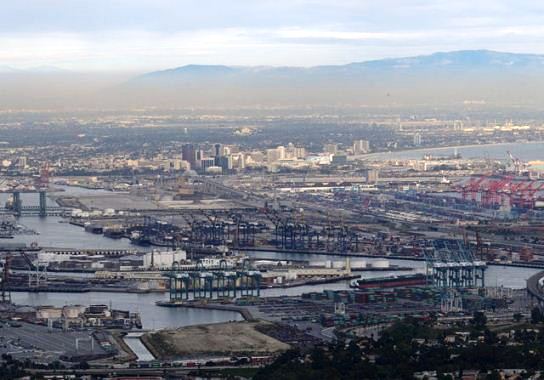-
44 container carriers are anchored and awaiting a berth space outside the twin ports of Los Angeles and Long Beach, California, as of late August 27
-
The average wait rose to 7.6 days from 6.2 in mid-August
-
Delays have been commonplace in recent weeks and months, owing to stronger import demand into North America, port closures in China, escalating inter-modal tie-ups in the US, and labor shortages
-
There is also a general equipment imbalance, with demand from North Asia to North America significantly outweighing the demand on the backhaul route
Ship queues off the twin ports of Los Angeles and Long Beach in California, US, have reached an all-time high, causing more delays to companies during one of the busiest seasons for ocean freight transport.
There were 44 container carriers anchored and awaiting a berth space outside the two ports as of late August 27, topping the record of 40 initially set in early February, according to a report from Bloomberg, citing officials who monitor marine traffic in San Pedro Bay.
The average wait rose to 7.6 days from 6.2 in mid-August, Los Angeles port data showed, the report said.
Earlier, Gene Seroka, executive director of the Port of Los Angeles, in an interview on August 24 with CNBC, said cargo moving through the Port of Los Angeles was at record highs.
“Every node in the supply chain (is) showing right now its highest levels of throughput yet there’s still much more work to be done. As we’ve seen, factory output right now in Asia is also at peak levels but they’re still behind on orders. We have 99.5% of all ship capacity deployed today in the ocean going waters yet there’s still not enough space for all the imports coming to the US,” Seroka said.
He noted that “once the cargo gets here, our port is full of containers but they’re sitting for longer periods of time than normal, almost 2-1/2 times pre-surge numbers.”
The adjacent ports of Los Angeles and Long Beach are the number one and two busiest ports in the US, respectively.
Delays have been commonplace in recent weeks and months, owing to stronger import demand into North America amid drawdowns in warehouse stocks for many retailers, said Platts, provider of energy news and benchmark prices for commodity markets.
The delays have been exacerbated in combination with logistical challenges such as port closures in China, escalating inter-modal tie-ups in the US, and labor shortages.
The Los Angeles port data for August showed that 90% of ships headed straight to anchor, joining a queue averaging 7.6 days of anchor time, Platts continued.
This recent spike in demand has come ahead of Black Friday and the holiday season. The upcoming holidays, while still far away, have resulted in some importers seeking to secure cargo well ahead of time. Delaying increases the risk of being caught out with late deliveries, as was seen in 2020, said Platts.
Further, there was a general equipment imbalance, with demand from North Asia to North America significantly outweighing the demand on the backhaul route.
“The sustained and high level of demand has left supply chains groaning in the market, with issues emerging in moving containers out of the port due to a dearth in chassis supply in the US. This has resulted in backlogs beginning to form quayside,” said the Platts report.
Photo by NickCPrior





